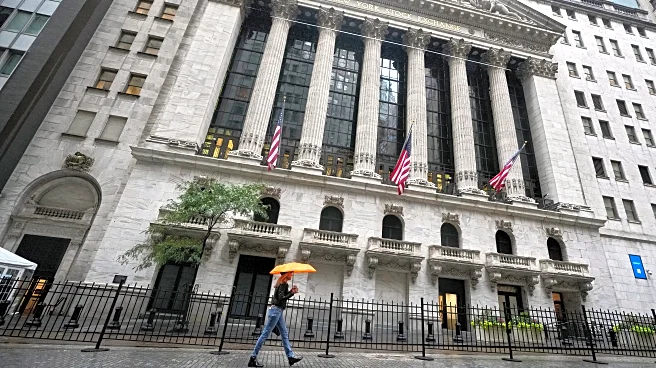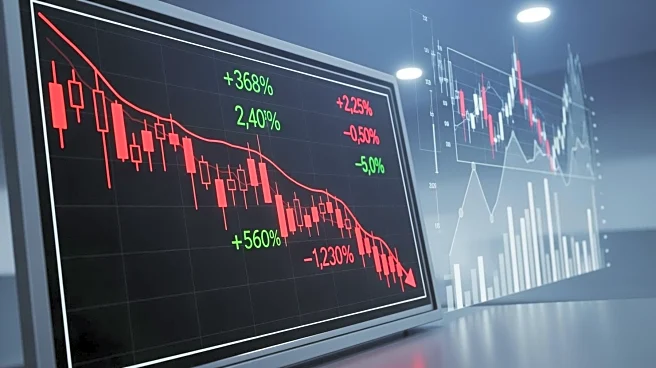What's Happening?
The S&P 500 is experiencing increased volatility, but JPMorgan's technical strategist Jason Hunter believes the upward trend in equities remains intact. Hunter has identified the 50-day moving average
of the S&P 500, currently at 6,551.34, as a critical level for the index to maintain. On Tuesday, the S&P 500 closed at 6,644.31, having tested the short-term average with an intraday low of 6,555.07. The index successfully retested last Friday's low of 6,551, indicating that the bull trend is still in place. However, Hunter warns that if the index closes below this average, it could lead to increased volatility and a potential pullback to support zones between 6,300 and 6,150-6,200. The S&P 500 has not closed below its 50-day moving average since April, when tariffs nearly ended the bull market.
Why It's Important?
The S&P 500's ability to maintain its 50-day moving average is crucial for investor confidence and market stability. A breach of this level could signal increased volatility and potential declines, affecting investor sentiment and portfolio strategies. The index's performance is a key indicator of the broader U.S. economy, influencing decisions by institutional investors and impacting sectors across the market. A significant pullback could lead to a reassessment of risk and investment strategies, potentially affecting capital flows and economic growth. The ongoing volatility underscores the importance of monitoring technical indicators and market trends to anticipate shifts in the economic landscape.
What's Next?
If the S&P 500 fails to hold its 50-day moving average, investors may brace for increased volatility and potential declines. Market analysts and strategists will closely monitor the index's performance, with potential implications for investment strategies and economic forecasts. Stakeholders, including institutional investors and financial advisors, may adjust their portfolios to mitigate risks associated with heightened volatility. The market's response to these developments will be critical in shaping future investment decisions and economic outlooks.
Beyond the Headlines
The current market conditions highlight the importance of technical analysis in guiding investment strategies. The focus on the S&P 500's 50-day moving average reflects broader concerns about market stability and the potential for significant shifts in investor behavior. As volatility persists, the role of technical indicators in predicting market movements becomes increasingly relevant, offering insights into potential risks and opportunities. This situation also underscores the interconnectedness of global economic factors, such as tariffs and geopolitical tensions, in influencing U.S. market dynamics.













